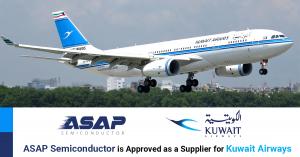
The Global Anti-aircraft Warfare Market to grow from USD 17.06 billion in 2022 to USD 29.57 billion by 2030, at a CAGR of 7.11%.
PUNE, MAHARASHTRA, INDIA , December 7, 2023 /EINPresswire.com/ — The “Anti-aircraft Warfare Market by Capability (Attack, Protection, Support), System (Command & Control Systems, Electronic Warfare System, Radar Systems), Range, Platform – Global Forecast 2023-2030″ report has been added to 360iResearch.com’s offering.
The Global Anti-aircraft Warfare Market to grow from USD 17.06 billion in 2022 to USD 29.57 billion by 2030, at a CAGR of 7.11%.
Request a Free Sample Report @ https://www.360iresearch.com/library/intelligence/anti-aircraft-warfare?utm_source=einpresswire&utm_medium=referral&utm_campaign=sample
Anti-aircraft warfare encompasses the measures, tactics, techniques, and systems used to defend against hostile aircraft or missiles in the atmosphere or space. Passive defense includes measures taken to minimize the effectiveness of aerial attacks, such as camouflage, dispersion, and the construction of underground facilities. Active defense involves actions taken to destroy or neutralize enemy aircraft and missiles, employing a range of both ground-based and air-based weapons systems. The rise in geopolitical tensions and increased defense spending by governments worldwide are accelerating the deployment of anti-aircraft warfare systems globally. However, the high cost of developing anti-aircraft warfare systems may impede their adoption by the end-use sectors. Moreover, technological advancements in radar technology, missile guidance systems, and the development of laser and directed-energy weapons can significantly improve the efficacy and accuracy of anti-aircraft systems.
Capability: Extensive use of anti-aircraft warfare systems for protection purposes
The attack capabilities of an anti-aircraft warfare system include neutralization and interdiction capacities that deter and eliminate enemy airborne assets. Utilizing advanced weaponry, such as surface-to-air missiles, anti-aircraft guns, and laser-guided systems, can effectively engage enemy aircraft, drone technology, and cruise missiles. Additionally, new-generation systems employ cutting-edge technologies such as artificial intelligence and advanced radar systems for target acquisition and threat assessment, making them integral components of comprehensive aerial defense strategies. Anti-aircraft warfare systems play a critical role in defensive procedures by safeguarding ground units, military installations, and urban areas from airborne attacks. They utilize early warning radar systems to detect incoming enemy assets at large distances, while defensive artillery and missile systems neutralize threats. The proliferation of this technology has also increased the development of low-frequency radar systems, further enhancing the protective capabilities of these systems. Anti-aircraft systems support operations both in the air and on the ground. These systems help maintain air superiority, providing essential cover for ground advancements and retreats. They also counter enemy airborne reconnaissance, disrupting the opponent’s intelligence gathering and impeding operational efficiency. The advent of network-centric warfare strategies has transformed anti-aircraft systems into critical nodes within more extensive defense networks, enabling effective communication and operational coordination between different defense assets.
Range: Proliferating demand for long-range (>100 km) anti-aircraft warfare systems
Long-range anti-aircraft systems are advanced air defense assets capable of engaging aerial threats such as aircraft, cruise missiles, and ballistic missiles at distances exceeding 100 kilometers. These systems feature high-powered radar arrays for long-distance detection and tracking, coupled with interceptor missiles designed to neutralize incoming targets at high altitudes. Medium-range anti-aircraft systems (20 – 100 km) are versatile, as they are used to protect against aircraft, UAVs, and smaller-scale ballistic threats within a moderate radius. Such systems often combine powerful targeting radar, command and control units, and multiple missile launchers to deliver reliable protection against diverse airborne threats. Medium-range systems are instrumental in layered air defense strategies, serving as an intermediate shield when longer-range interceptions fail or are infeasible. Short-range anti-aircraft systems (<20 km) are characterized by their high reaction speeds; these systems include man-portable air-defense systems (MANPADS) and vehicle-mounted platforms. These systems often employ a combination of infrared homing, radar guidance, and sometimes gun-based systems to deliver rapid engagement of threats.
Platform: Inclination towards advanced airborne platforms
Airborne anti-aircraft warfare systems are a critical component of modern, robust defense strategies and refer to airborne weapons that are designed to neutralize enemy aircraft in flight. The primary activity involves tracking, interception, and destroying antagonistic aircraft, missiles, and drones. Utilizing radar technology, these systems continuously survey the airspace and, upon detecting any potential threats, deploy precise, guided missiles. The land-based anti-aircraft warfare systems are primarily designed to defend against enemy aircraft from a ground-based facility, often employing missile systems, anti-aircraft guns, and electronic warfare appliances. These computer-controlled missile systems can precisely track, identify, and eliminate airborne threats, immensely improving protection over critical infrastructures and military bases. Naval anti-aircraft systems are essential for maritime defense, aiming to secure naval fleets from enemy aircraft and missiles. Navy ships can deploy various advanced missile systems, anti-aircraft guns, and close-in weapon systems (CIWS) to engage with different airborne threats. It combines radars, computers, and missiles to offer multi-tier protection against diverse aerial attacks.
System: Significant penetration of electronic warfare system
Command & control systems are primarily equipped with decision-making functions such as threat evaluation, target prioritization, system response formulation, and post-action analysis. Augmented by advanced algorithms and AI, these systems leverage real-time data feeds and complex calculations to maneuver anti-aircraft response. Strategic use of command & control systems can significantly enhance operational efficiency and effectiveness. Electronic warfare systems are major technological components of modern defense arsenals. Their primary purpose is to deceive, disrupt, or deny the enemy’s electronic systems. They can include disability or misdirection of enemy radar, jamming communication lines, or advanced cyber-attacks on command & control systems. By incorporating high spatial, temporal, and spectral adaptability, electronic warfare systems largely contribute to maintaining operational superiority. Radar systems are fundamental for detecting, locating, tracking, and classifying targets. Modern radar systems are equipped with powerful processing capabilities, enabling a swift exchange of information with weapon systems for accurate and rapid target engagement. Weapon systems are the end-effectors in anti-aircraft warfare, fulfilling the detection-to-engagement process. They comprise ground-to-air missile systems, anti-aircraft artillery, and other projectile systems. Advanced weapon systems have high-precision guided missiles and multifaceted targeting apparatus.
Regional Insights:
The anti-aircraft warfare system market is evolving in the Americas due to increased defense spending and the development and production of advanced anti-aircraft systems. Europe’s anti-aircraft warfare market is influenced by collective defense agendas and a growing focus on integrated and interoperable air defense systems to counter potential threats. The EMEA region exhibits steady growth due to rising security concerns, territorial conflicts, and the need to replace outdated systems. The Asia-Pacific region represents a growing demand for anti-aircraft warfare systems, driven by escalating regional tensions, modernization initiatives, and increased defense spending. Besides, ongoing research to integrate breakthrough technologies to enhance the functionality of anti-aircraft warfare systems is anticipated to propel their deployment across the military & defense sectors across the globe.
FPNV Positioning Matrix:
The FPNV Positioning Matrix is essential for assessing the Anti-aircraft Warfare Market. It provides a comprehensive evaluation of vendors by examining key metrics within Business Strategy and Product Satisfaction, allowing users to make informed decisions based on their specific needs. This advanced analysis then organizes these vendors into four distinct quadrants, which represent varying levels of success: Forefront (F), Pathfinder (P), Niche (N), or Vital(V).
Market Share Analysis:
The Market Share Analysis offers an insightful look at the current state of vendors in the Anti-aircraft Warfare Market. By comparing vendor contributions to overall revenue, customer base, and other key metrics, we can give companies a greater understanding of their performance and what they are up against when competing for market share. The analysis also sheds light on just how competitive any given sector is about accumulation, fragmentation dominance, and amalgamation traits over the base year period studied.
Key Company Profiles:
The report delves into recent significant developments in the Anti-aircraft Warfare Market, highlighting leading vendors and their innovative profiles. These include Airbus Defense and Space by Airbus SE, Amentum Service, Inc., Aselsan A.Ş., BAE Systems plc, Bharat Dynamics Limited, Booz Allen Hamilton, Dassault Aviation SA, Elbit Systems Ltd., General Dynamics Corporation, Hanwha Group, Israel Aerospace Industries Ltd., Kongsberg Gruppen ASA, L3Harris Technologies, Inc., Leidos, Inc., Leonardo S.p.A., Lockheed Martin Corporation, MBDA Holdings SAS, Northrop Grumman Corporation, Rafael Advanced Defense Systems Ltd., Rheinmetall AG, RTX Corporation, Saab AB, Textron Inc., Thales Group, and The Boeing Company.
Inquire Before Buying @ https://www.360iresearch.com/library/intelligence/anti-aircraft-warfare?utm_source=einpresswire&utm_medium=referral&utm_campaign=inquire
Market Segmentation & Coverage:
This research report categorizes the Anti-aircraft Warfare Market in order to forecast the revenues and analyze trends in each of following sub-markets:
Based on Capability, market is studied across Attack, Protection, and Support. The Attack is projected to witness significant market share during forecast period.
Based on System, market is studied across Command & Control Systems, Electronic Warfare System, Radar Systems, and Weapon Systems. The Weapon Systems is projected to witness significant market share during forecast period.
Based on Range, market is studied across Long Range (>100 km), Medium Range (20 – 100 km), and Short Range (<20 km). The Medium Range (20 – 100 km) is projected to witness significant market share during forecast period.
Based on Platform, market is studied across Airborne, Land, and Naval. The Airborne is projected to witness significant market share during forecast period.
Based on Region, market is studied across Americas, Asia-Pacific, and Europe, Middle East & Africa. The Americas is further studied across Argentina, Brazil, Canada, Mexico, and United States. The United States is further studied across California, Florida, Illinois, New York, Ohio, Pennsylvania, and Texas. The Asia-Pacific is further studied across Australia, China, India, Indonesia, Japan, Malaysia, Philippines, Singapore, South Korea, Taiwan, Thailand, and Vietnam. The Europe, Middle East & Africa is further studied across Denmark, Egypt, Finland, France, Germany, Israel, Italy, Netherlands, Nigeria, Norway, Poland, Qatar, Russia, Saudi Arabia, South Africa, Spain, Sweden, Switzerland, Turkey, United Arab Emirates, and United Kingdom. The Europe, Middle East & Africa commanded largest market share of 38.35% in 2022, followed by Americas.
Key Topics Covered:
1. Preface
2. Research Methodology
3. Executive Summary
4. Market Overview
5. Market Insights
6. Anti-aircraft Warfare Market, by Capability
7. Anti-aircraft Warfare Market, by System
8. Anti-aircraft Warfare Market, by Range
9. Anti-aircraft Warfare Market, by Platform
10. Americas Anti-aircraft Warfare Market
11. Asia-Pacific Anti-aircraft Warfare Market
12. Europe, Middle East & Africa Anti-aircraft Warfare Market
13. Competitive Landscape
14. Competitive Portfolio
15. Appendix
The report provides insights on the following pointers:
1. Market Penetration: Provides comprehensive information on the market offered by the key players
2. Market Development: Provides in-depth information about lucrative emerging markets and analyzes penetration across mature segments of the markets
3. Market Diversification: Provides detailed information about new product launches, untapped geographies, recent developments, and investments
4. Competitive Assessment & Intelligence: Provides an exhaustive assessment of market shares, strategies, products, certification, regulatory approvals, patent landscape, and manufacturing capabilities of the leading players
5. Product Development & Innovation: Provides intelligent insights on future technologies, R&D activities, and breakthrough product developments
The report answers questions such as:
1. What is the market size and forecast of the Anti-aircraft Warfare Market?
2. Which are the products/segments/applications/areas to invest in over the forecast period in the Anti-aircraft Warfare Market?
3. What is the competitive strategic window for opportunities in the Anti-aircraft Warfare Market?
4. What are the technology trends and regulatory frameworks in the Anti-aircraft Warfare Market?
5. What is the market share of the leading vendors in the Anti-aircraft Warfare Market?
6. What modes and strategic moves are considered suitable for entering the Anti-aircraft Warfare Market?
Mr. Ketan Rohom
360iResearch
+ +1 530-264-8485
[email protected]
![]()
Originally published at https://www.einpresswire.com/article/673530844/anti-aircraft-warfare-market-worth-29-57-billion-by-2030-growing-at-a-cagr-of-7-11-exclusive-report-by-360iresearch



